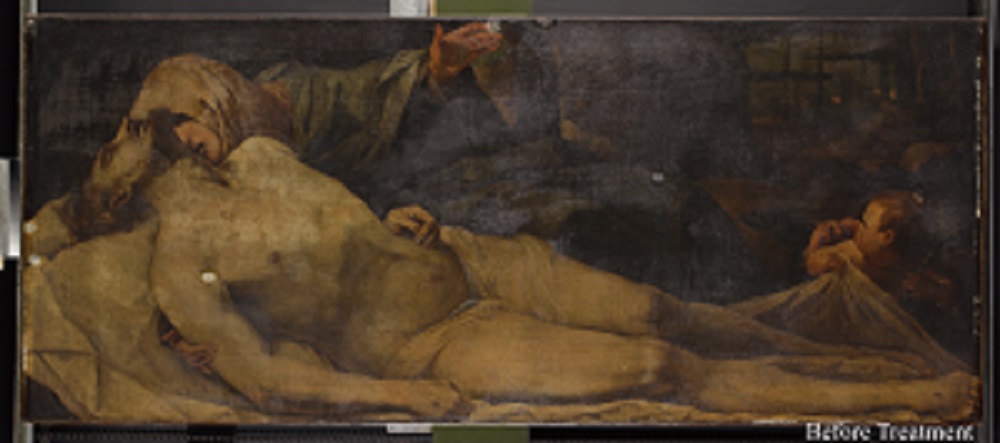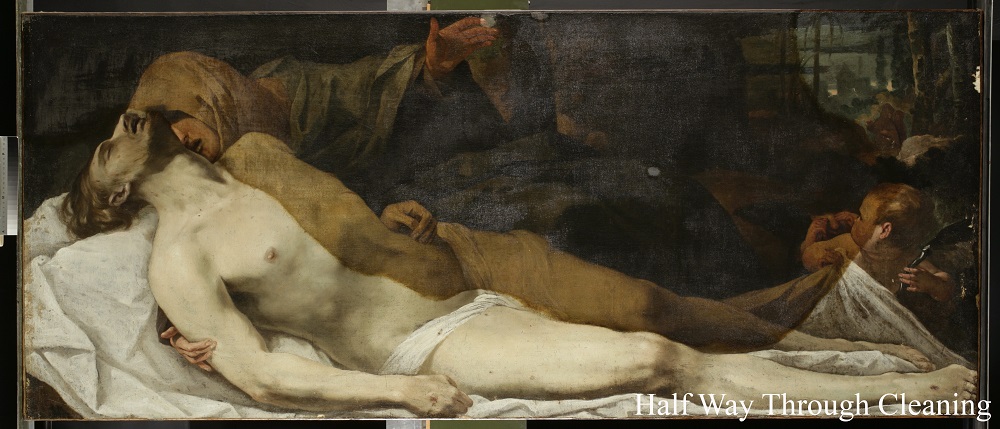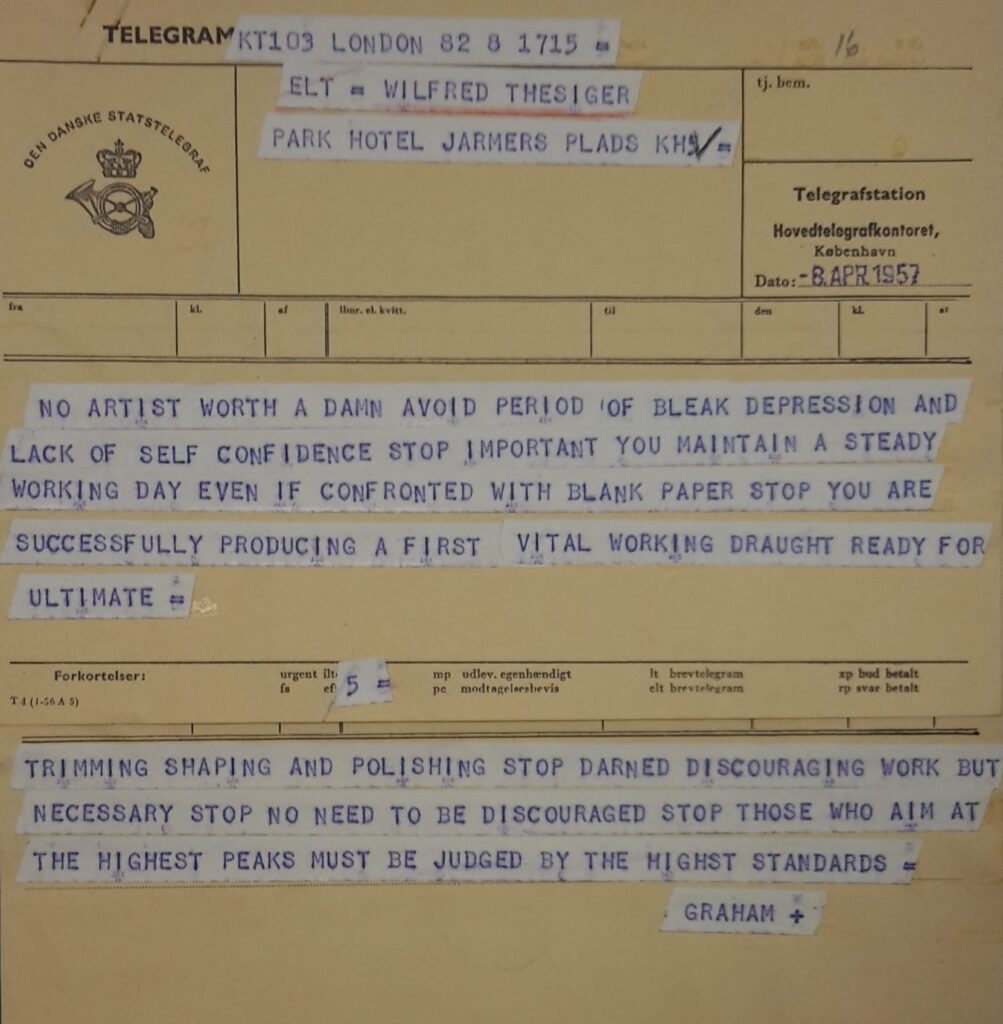As the newly appointed Conservation Steward, I’ve been working over the past nine months to improve how we care for the objects in the College Collections, commissioning specialists to perform conservation treatments and carrying out preventive care as well as in-house conservation treatments.
Recently we commissioned a particularly interesting treatment on a painting called The Lamentation by Pietro Testa–a 17th century oil on canvas. It hangs over the altar of the Our Lady of Sorrows Chapel, located on Eton Court Road in Eton. The chapel was commissioned between 1905 and 1915 by Old Etonian Lord Braye, who wanted a Roman Catholic Chapel built for the use of the Roman Catholic students of the school and the parishioners of Eton and Datchet. In recent years this building was acquired by Eton College.

‘The Lamentation’ before treatment
The Lamentation is significant in size (two metres long by one metre high) and holds a prominent place within the chapel. In 2014 an initial condition assessment of The Lamentation was undertaken by the Hamilton Kerr Institute in Cambridge. They ascertained that the original canvas was typical of the early 17th century, but that it had undergone relining onto a secondary canvas in the 19th century. The paint layers seemed stable but the varnish was extremely discoloured, taking on an orange-brown tone that rendered the painting almost unreadable. In addition it was noted that there were many areas of retouching, probably from previous treatments, which were also extremely discoloured and disfiguring.
The conclusions from the assessment were that a full cleaning of the painting should be undertaken, including total removal of the varnish, removal of the overpaint in retouched areas and consolidation of any flaking paint layers. Finally, areas where paint had been lost would be filled and retouched, and a new varnish added for protection. Thanks to a generous donation, we were able to fund the treatment and in 2016 the painting was sent to the Hamilton Kerr Institute to be conserved.
It has now been almost a year since it left Eton and it has proved itself to be one of the most transformative conservation treatments ever undertaken at Hamilton Kerr. During the varnish removal it emerged that there were many layers of decayed varnish with dirt sandwiched between them, explaining why the painting was so dark and the subjects almost completely obscured. What conservators found under these layers were the bright and clear tones of the original 17th-century paint, which had been unseen for years. The painting is now in its final stage of conservation, being retouched and awaiting its new varnish layer. It is expected to be returned to us in early May.

This project has been extremely rewarding in many ways, including the forging of new relationships with external conservators and giving conservation students the chance to work on and research a significant artwork. It will bring an artist’s original vision back to life and share it with the parishioners of Our Lady of Sorrows and the wider Eton community: an exciting example of the Collections team’s work to care for and preserve the collections for the benefit of present and future generations.
By Aimee Sims, Conservation Steward



